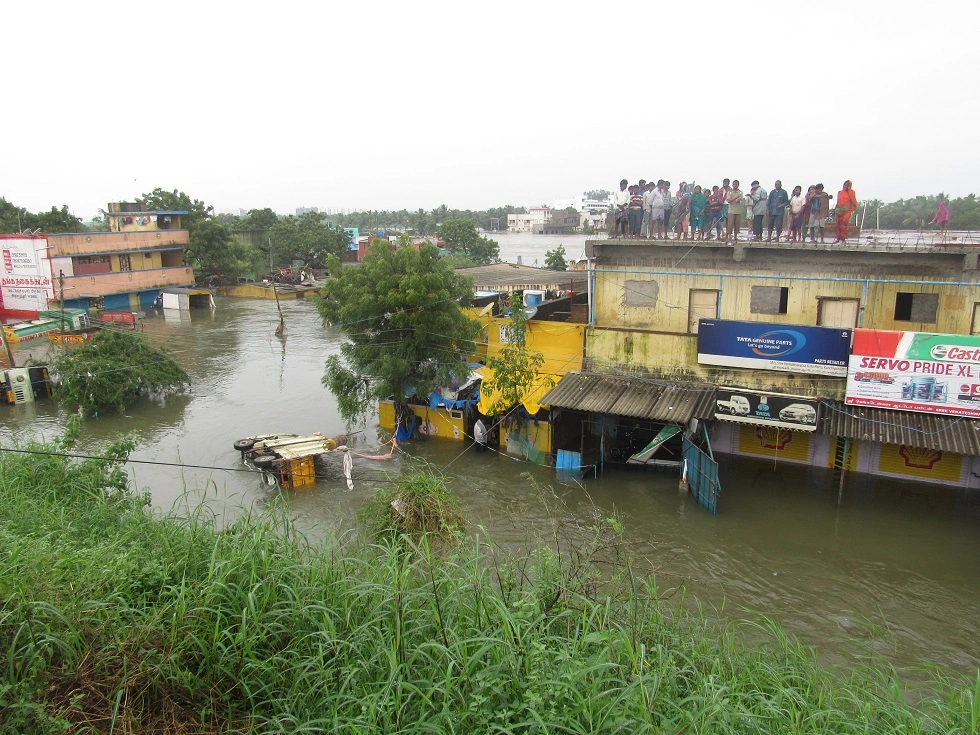Why India’s Climate Fight Must Start Locally

What if Bengaluru raised ₹250 crore through a Lake Revival Bond to make its flood-prone corridors more resilient? Imagine a district like Darbhanga in North Bihar issuing a “Talaab Bond” to revive its hundred historic ponds without endlessly waiting for central government aid. Or Odisha floating a ₹500 crore Blue Belt Bond to strengthen cyclone shelters and protect mangroves before the next storm.
These aren’t fictional scenarios. They are tested financial tools used worldwide to address climate challenges. Known as Subnational Climate Bonds, they could be one of India’s most overlooked climate innovations.
When the Water Doesn’t Wait
In May 2025, Bengaluru experienced its second-heaviest pre-monsoon rainfall in a decade. Three people died, more than 500 homes were submerged, and children were stranded in schools. All this happened months before the monsoon season.
The tragedy wasn’t just about heavy rain; it was about a system failing. In the 1960s, Bengaluru had over 280 lakes. Today, fewer than a hundred remain. These lakes weren’t just scenic. They acted as shock absorbers. Their disappearance has turned every downpour into a potential disaster.
Elsewhere, in Aizawl, landslides now routinely rip through homes and roads. Yet funds still pour into relief rather than prevention. In 2019, Patna was submerged after a night of intense rain. Boats ferried residents through upscale neighbourhoods, and helicopters dropped food. But the real cause wasn’t nature’s fury. It was clogged drains, vanished ponds, and chaotic sprawl.
From Cape Town’s Day Zero to Jakarta’s sinking coast, the lesson is clear: fund adaptation locally or pay later in lives and capital.
The Darbhanga Paradox
In Darbhanga, climate breakdown is etched into the land. Three decades ago, it had around 350 historic ponds. Today, barely 150 remain. During the pandemic, at least 25 ponds were illegally sold or grabbed by land mafia. Without them, rainwater floods streets, stagnates in drains, and fails to recharge aquifers.
When activist Shyam Jha visited his hometown, he found locals remembered every lost waterline. Schoolchildren drew vanished ponds from memory. Elders mapped where water once flowed. “The community knows exactly what needs to be done,” he said. “What’s missing is the means to do it.” Across rural India, the burden of water scarcity falls most heavily on women and girls, who walk miles as wells dry up.
The Power of Promise: A Home Loan for Resilience
Subnational Climate Bonds are essentially home loans for a town’s survival. Districts, municipalities, or even panchayats borrow upfront from investors to fund specific climate solutions: reviving ponds, cooling overheated wards, recharging water tables, or building storm-resilient clinics.
This isn’t theory. After Cape Town nearly ran out of water in 2018, it explored resilience bonds to insure against drought. San Francisco used green bonds for sea wall reinforcements. Jakarta issued bonds to fight coastal flooding. The novelty lies not in borrowing, but in borrowing for local climate action.
How It Works: Structure, Certify, Repay
A local body identifies a climate need and designs a bond with defined costs, timelines, and impact. A green finance body certifies its climate value, with risk reduced by guarantees from NABARD, state finance corporations, or philanthropic capital. Repayment happens over 7–10 years through direct savings, new revenue streams, and performance-linked grants. For ESG-focused investors, these bonds can offer returns of 5–7%, often higher than those of sovereign bonds, while delivering measurable resilience.
Pune repays its municipal bond through water taxes, as seen in its 2017 issuance for water projects. Odisha could fund mangrove restoration using blue carbon credits, which store up to four times more carbon than terrestrial forests.
What’s Holding Us Back?
Local governments cannot often structure bonds. India has no clear regulatory roadmap for sub-state green bonds. Investors worry about repayment. But these are design issues, not dead ends.
Blended finance could reduce risk, with NABARD’s ₹1,000 crore Rural Infrastructure Development Fund absorbing early-stage losses. SEBI could create a fast-track “Subnational Green Window” with audit standards and guarantees. Digital dashboards could track every rupee—from ponds revived to homes flood-proofed. Third-party verifiers like the Climate Bonds Initiative could add credibility.
Ahmedabad’s municipal bond cleared SEBI approval in just 45 days. Climate bonds deserve the same urgency.
The Economics of Inaction
India loses over ₹5 lakh crore annually to climate-related disasters. The World Bank warns climate change could shave 2.8% off GDP every year. Yet local governments get only a sliver of adaptation funds, often post-disaster and tied to central schemes.
“We think resilience is expensive,” says development professional Sharique Khan. “But every ₹1 spent on preparedness saves ₹4–7 in recovery. Subnational bonds flip the script—they bring the money before the storm, not after.”
Beyond Finance: Climate Democracy
India already has the architecture. Sovereign green bonds are oversubscribed. Cities like Pune and Ahmedabad have issued municipal bonds. What’s missing is a shift from climate diplomacy to climate democracy.
Let Jharkhand issue a “Hill Resilience Bond” to protect schools from landslides. Let Kerala create a “Coastal Shield Bond” for climate-smart homes for fisherfolk. Let Darbhanga reclaim its water heritage. Let Bengaluru restore its lakes—not as nostalgia, but as survival. Because when a city drowns, its economy sinks with it.
The Future Won’t Wait
Subnational Climate Bonds aren’t just finance—they’re tools of hope. They let communities stop waiting and start building. What if every panchayat could shield itself from climate shocks? What if children walked to school not through floods, but under green, shaded corridors funded by their own town’s bond?
